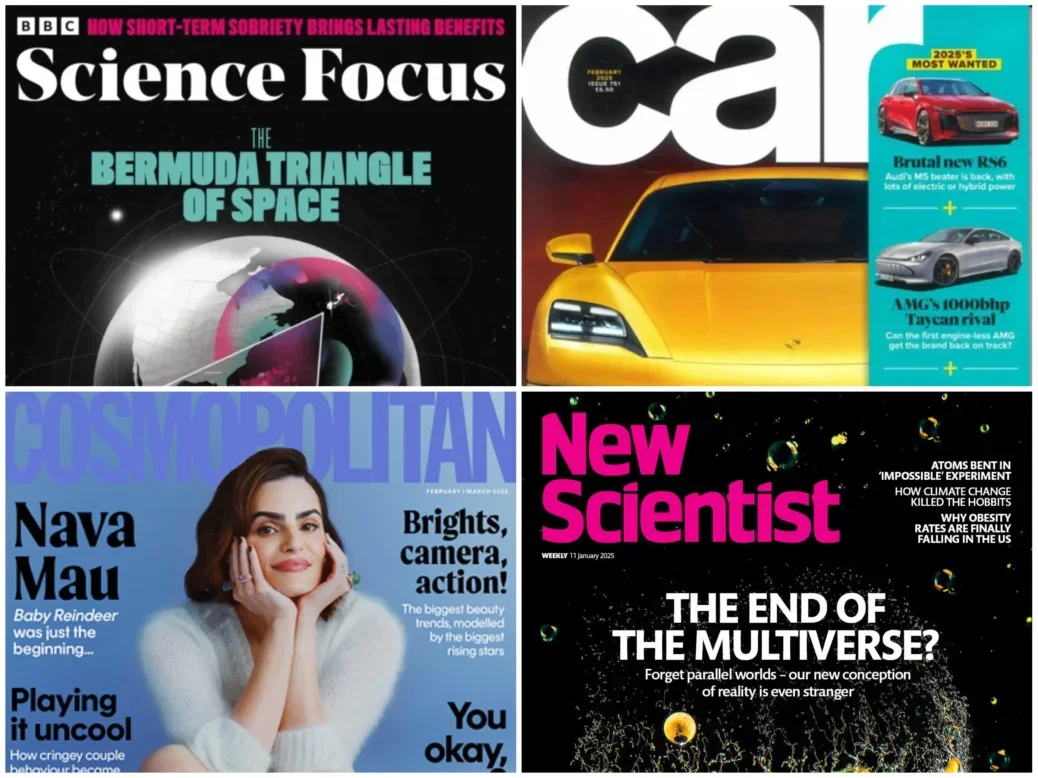
More than half of digital magazine circulation came via “all you can read” services in 2024, according to the latest ABC figures.
ABC-audited magazines had a combined average digital circulation of three million per edition (excluding any copies distributed in bulk for free) – up 14% compared to 2023.
Some 1.6 million, or 55%, of the combined 2024 digital magazine circulation came from services like Apple News+, Cafeyn, Kindle Unlimited and Readly.
This circulation is defined as a digital copy that a consumer has “purchased and viewed as part of a multi-publication package”.
It means publishers do not receive a full subscription price for these sales but instead get a royalty fee based on a Spotify-style model.
- Full breakdown of magazine ABCs 2024: Half of print titles see distribution drop 10% or more
- News and current affairs magazine ABCs 2024: Prospect digital growth offsets print decline
- Women’s interest magazine ABCs: Four out of 60 titles see print growth in 2024
Apple News+ does not disclose its subscriber numbers but is expected to be by far the biggest such bundle provider. Cafeyn has 2 million users across its main markets in France, Netherlands, UK and Canada while Readly has 427,227 full-paying subscribers and its biggest markets are Germany, the UK and Sweden.
For many magazines, these services make up the vast majority of their digital readership.
For example Our Media’s BBC Science Focus, which saw 204% year on year growth in its digital circulation, attributes 99% of its readership to them.
They also make up 99% of the digital readership for Grazia, up 94% to 93,399, and Car, up 4% to 62,524 (both owned by Bauer).
At Immediate Media’s BBC History Magazine, 92% of the digital circulation of 55,905 comes from “all you can read” – up 325% year on year.
However some have their own strong subscriber base as well.
At the DMGT-owned New Scientist’s US and Canada edition (digital circulation of 48,039, up 144%) they are 50% of the total, while for its edition in the rest of the world they make up 20% of a total of 42,651 (up 40%).
Meanwhile at Prospect, “all you can read” makes up 51% of digital readership (total of 25,167, up 87%).
Some publishers don’t make their magazines available on the “all you can read” services, including The Economist, The Spectator and The Week.
The Economist has the biggest digital circulation nonetheless, on 949,171 (down 2% year on year).
In total 66 of the 126 digital magazines included in our analysis saw a year-on-year circulation decline – just over half.
The seven biggest declines were all seen by Bauer Media titles, although all had a relatively small digital circulation. Take A Break, which had no “all you can read” copies, was down 79% to 173 while Bike was down 31% to 3,887 (94% “all you can read”) and Garden Answers was down 29% to 2,149 (95% Spotify-style).
Email pged@pressgazette.co.uk to point out mistakes, provide story tips or send in a letter for publication on our "Letters Page" blog
